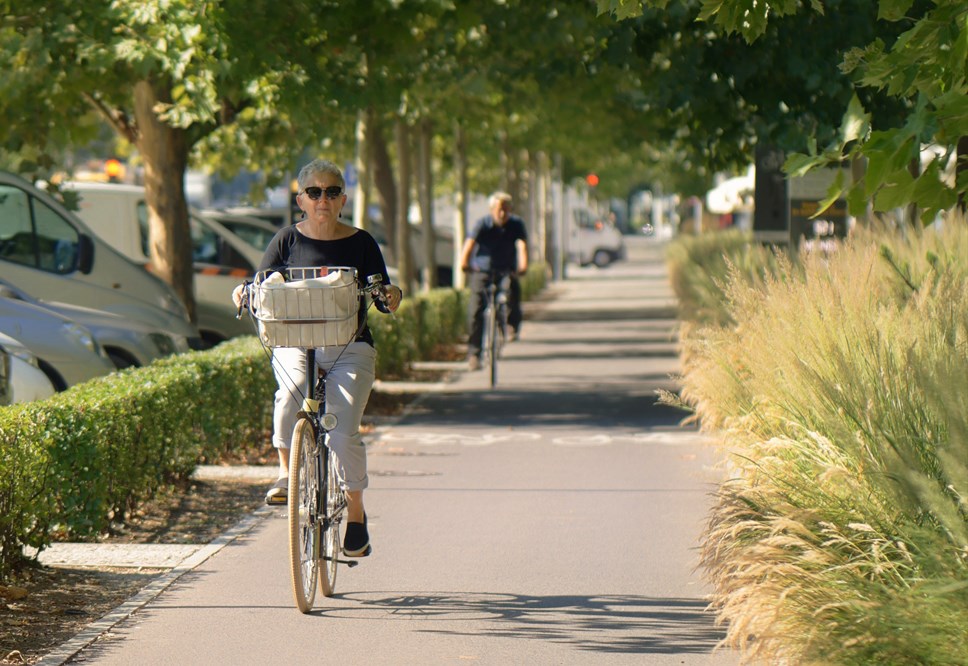
Monday Musing: Physical effort required to deliver walking and cycling future
It will take more than one champion to create a cycling infrastructure, says BPA's Jo Audley
Government announced in January that former Olympic cyclist, Chris Boardman will be the national commissioner of the government’s new cycling and walking body, Active Travel England (ATE) who said his aim was to create “a quiet revolution” in how people get around. I don’t know what he meant by quiet, because I believe we need to be very vocal about active travel.
ATE is all about the physical infrastructure being put into place rather than encouraging individuals themselves to be more active. It will inspect and publish reports on highway authorities for their performance on active travel and identify particularly dangerous failings in their highways for cyclists and pedestrians, according to the Department for Transport’s press release. It all seems to tie in neatly with the recent changes to the Highway Code and the hierarchy of road users, which puts pedestrians and cyclists at the top.
ATE is needed, but there does have to be an infrastructure to begin with. I read an article published by the Guardian a few weeks later, which reported that a group called Transport for New Homes found that new greenfield housing actually encouraged car use because sites were so far away from any amenities. Footpaths led nowhere, and many places weren’t on a bus route so the only way to get to the shops, or anything else for that matter, was by car. It sounds daft, but this sort of thing happens all the time. How many planning policies or applications have you seen that talk about walking and cycling that never materialise? And this was happening in places that were supposed to be environmentally friendly!
Large sums of money have been made available for schemes such as an e-cargo bike scheme, infrastructure around train stations (which seems to have been around for years) and active travel prescriptions – yes, you can actually get a prescription for exercise to improve your health! Who knew? However, if you can’t use a footpath for a decent walk or the roads are too busy to cycle safely, then these initiatives at best create inequalities or at worst are doomed to failure.
My own town centre plan had to be revised just recently to include walking and cycling, but the county council responsible for delivering the infrastructure is based in another part of the county whose staff most likely don’t know the town at all. We need champions like Chris at a local level to ensure that money is diverted to all areas and not just a few. And to add to a would-be cyclist’s woes, some office landlords are reluctant to provide cycle parking (secure or otherwise) because they don’t want the expense. Perhaps if they don’t see the need why bother? But it is another barrier to switching travel mode. There may be many willing cyclists that we never see because if they can’t park their bike at work they remain a reluctant part of the problem. This end point of the travel equation has quite possibly been missed and needs to be addressed.
Speaking of infrastructure and parking, the BPA is actively (see what I did there?) pursuing the ambition of transforming peripheral car parks into Park Active sites. Park Active even has its own cyclist and cycling champion called Chris! (The two Chris’s should definitely get together). Chris Wade is also Director of People & Places, facilitating town centre economic and community development, within which travel and parking feature as key issues. Chris believes Park Active has appeal to workers habitually travelling into town and also to visitors wanting to explore new places and linger.
Chris says: "I use the phrase ‘Park Active and attractive'. If we can make a tourist’s experience of a new place more enjoyable through an attractive walk or cycle in to town, they are more likely to repeat it. The Park Active brand offers the potential of reassurance in promoting the quality of such experiences."
I would agree with you Chris, but for those of us who don’t live in a tourist area but would like to cycle to work, I have discovered that not everyone is willing to offer the necessary parking.
One place that is already attractive is Colchester, which launched a Park Active scheme last year. For an historic city with narrow streets, Park Active is a good choice to remain an appealing destination and as uptake in active travel increases, improvements to air quality and less congestion will occur. Soon to follow is Brighton and Hove, another tourist hotspot and where leisure is the name of the game. Some car parks here already host bike hire stations, similar to those found in London.
The businesses supporting Park Active as a ‘brand ambassador’ are amazing; Bellsure who offer cycling, infrastructure, storage, and equipment such as cycle racks, stands and storage, and QI Managed services who offer solutions for cycle and scooter e-charging with their ‘dock, lock and charge system’. Brompton Bike Hire is a nationally respected promoter and provider of active travel, and their docking stations provide a high quality and flexible bike hire solution.
So, everything to support active travel is ready and waiting for the cycle paths and cycle parking to come into being. There’s no excuse for not getting on with sustainable transport whether it’s for leisure, working or health, wherever you live. But it does need to be championed, and it does need a number of voices to make it happen. No more paths to nowhere please.
